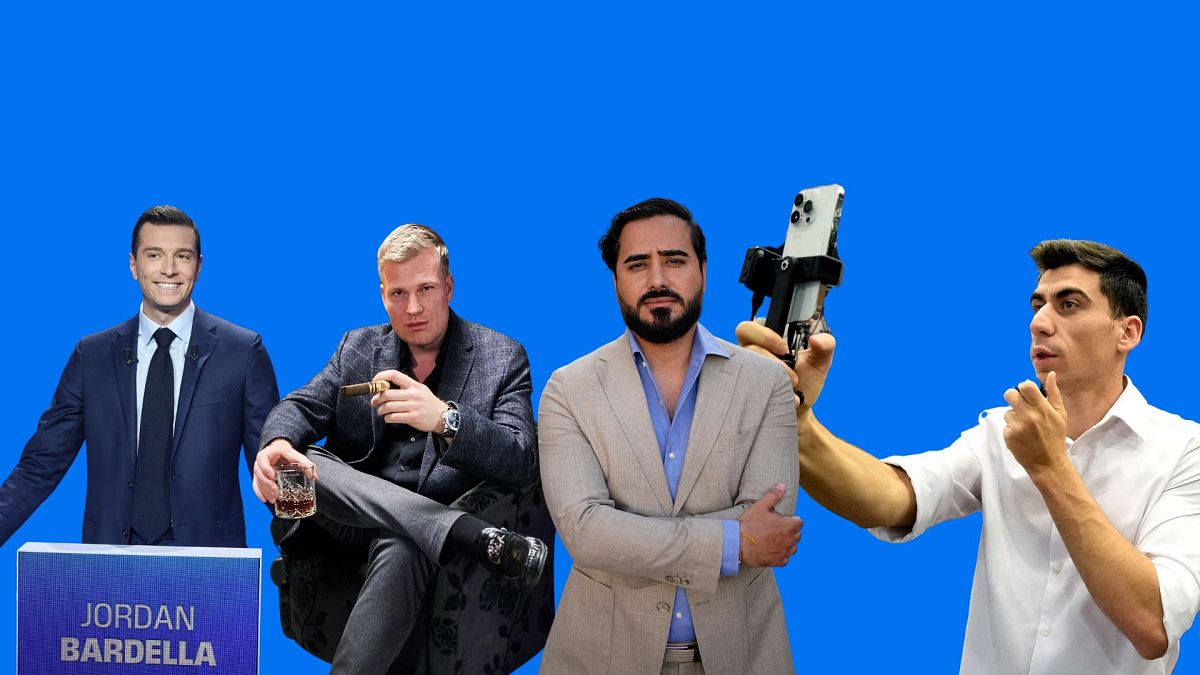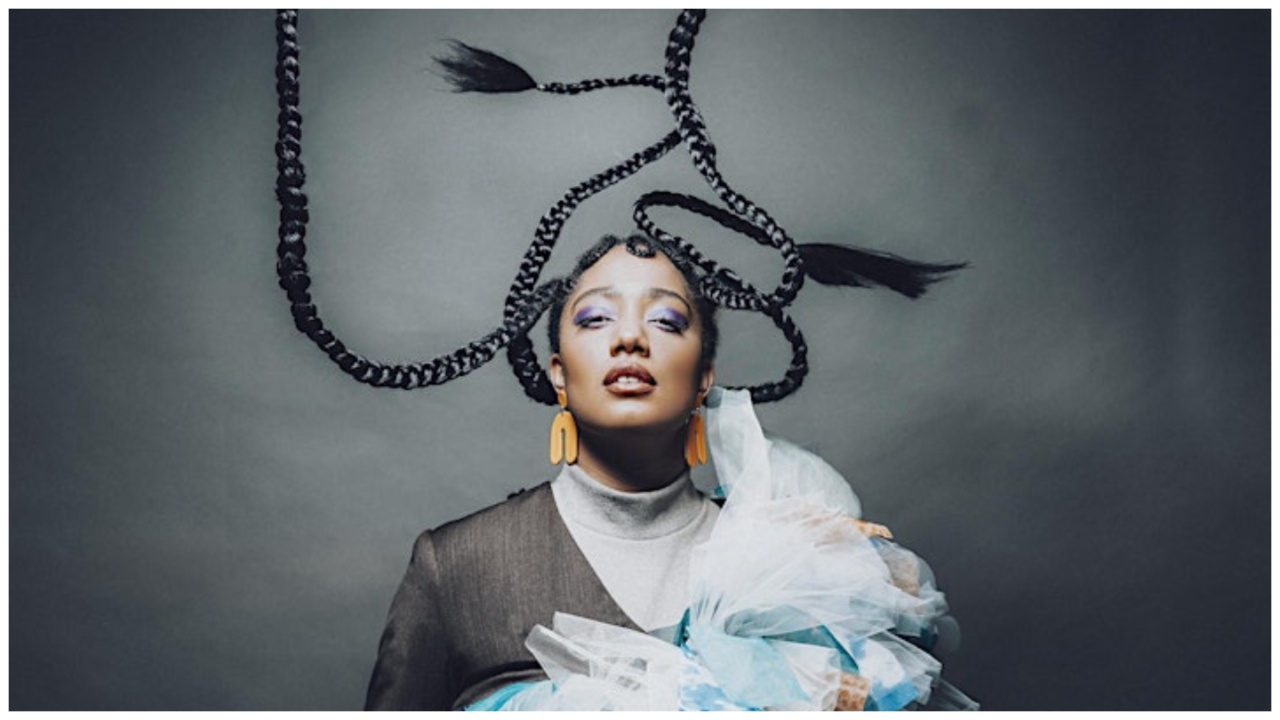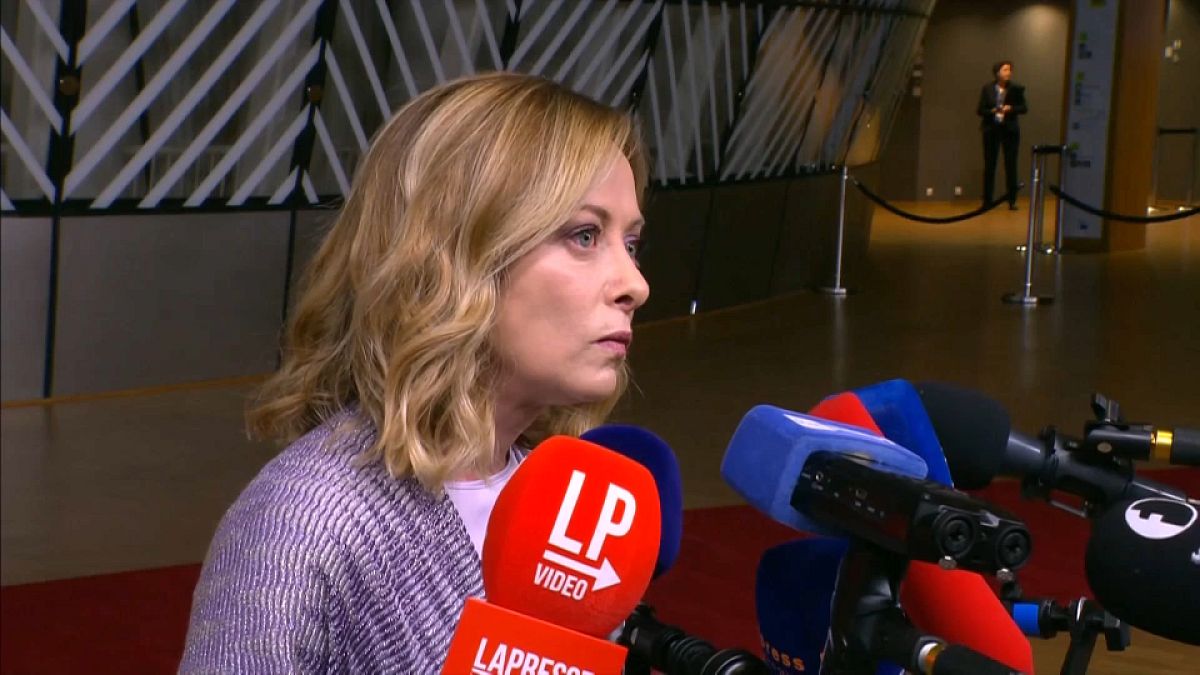New York
The N.Y.C. Neighborhood That’s Getting Even Thinner on Ozempic

The Upper East Side is one of the city’s wealthiest and healthiest neighborhoods. It has one of the highest life expectancies, and among the lowest rates of diabetes and obesity in New York City. Now the neighborhood’s residents are getting even thinner.
Last year, about 2.3 percent of people living along a stretch of Manhattan that extended from the Upper East Side down to Gramercy Park were taking Ozempic, Wegovy or Mounjaro — injectable medications belonging to a breakthrough new class of weight loss and diabetes drugs, according to an analysis by Trilliant Health, a health care analytics firm.
That was the highest rate in New York City.
In some parts of Brooklyn, by contrast, where diabetes and obesity are far more prevalent, the usage rate of these medications was just over half of what it was in affluent parts of Manhattan, according to that analysis.
“The running game show of the 10021 ZIP code is guessing who is on Vitamin O” — that is, Ozempic, said the writer, actress and Upper East Side native, Jill Kargman, referring to what has long been the city’s toniest ZIP code, covering much of the East 70s.
The analysis by Trilliant Health offers the most granular glimpse to date of who in New York City is using these medications. It also highlights a divide along socioeconomic lines in who has access to the drugs, which are in high demand but in short supply.
In the Brooklyn neighborhood of East New York, for example, which has some of the city’s highest diabetes rates, about 1.2 percent of people were on these injectable medications last year.
“We have medications that have the ability to have clinically significant results, but we are facing barriers in terms of access and availability,” said Dr. Priya Jaisinghani, an endocrinologist and obesity specialist at NYU Langone Health. “My hope is in the future, this is more accessible to those who really need it.”
In most neighborhoods in New York City, between 1 and 2 percent of residents were taking these medications last year, the analysis found. But in a few areas, the rates were above 2 percent. Those included places with elevated rates of obesity or diabetes, like southern Staten Island and the Northeast Bronx. But they also included some of the wealthiest and healthiest parts of the city, including the Upper West Side as well as the Upper East Side.
The medications regulate blood sugar and insulin, suppress appetite and cause the stomach to empty slowly, increasing the sensation of fullness. They hold great promise for reducing obesity and diabetes, which disproportionately affect Black and Hispanic New Yorkers (and, in the case of diabetes, Asian New Yorkers) more than white New Yorkers.
These medications are expected to reduce health disparities that cleave along race and class. But for now, access to these medications is itself becoming a disparity.
In New York, Medicaid — the government insurance program primarily for lower-income residents — generally will not pay for these medications for weight-loss purposes, meaning often only those with diabetes are covered.
Employer-sponsored insurance plans, often referred to as “commercial insurance,” sometimes cover these medications for weight loss as well as diabetes.
“Patients with commercial insurance have greater access to these medications,” the obesity medicine director at Mount Sinai Hospital, Dr. Reshmi Srinath, said.
New treatments often first benefit people who have higher incomes, top-notch health insurance or easy access to good doctors. That was the pattern that played out in recent years during the first months of the Covid-19 vaccine rollout and with prescriptions for PrEP, which is taken to prevent H.I.V. infection.
The analysis by Trilliant Health shows that in predominantly minority neighborhoods, these medications are mainly making their way to people with diabetes. In the South Bronx, which encompasses some of the city’s poorest neighborhoods, about 73 percent of people on these medications had diabetes, which suggests fewer patients are receiving these medications for weight loss alone.
But in some of the city’s wealthier enclaves, under a third had diabetes, Dr. Allison Oakes, Trilliant’s director of research, noted. In those neighborhoods, these medications were prescribed primarily for weight loss. In parts of Manhattan’s east side, fewer than 27 percent of prescriptions went to people with a history of Type 2 diabetes.
The analysis from Trilliant Health is based on the company’s database of pharmacy and medical claims.
The company’s core business involves selling research and analytics to major hospital systems and pharmaceutical companies. It performed the neighborhood analysis at the request of The New York Times.
The analysis has some limitations. It divided the city into 34 zones that are often used by the Health Department for conducting surveys. That means that several neighborhoods are grouped together. For example, TriBeCa, one of the city’s wealthiest neighborhoods, is grouped with Chinatown and the Lower East Side, where poverty rates are higher than the rest of Manhattan.
While the company did not have access to the ZIP codes where patients resided, it did have the locations of pharmacies where each patient typically picked up prescriptions, allowing for estimates of where that person lived, said Dr. Sanjula Jain, Trilliant’s chief research officer. But this meant excluding some patients where residency was in doubt.
Additionally, the company only had access to prescriptions that went through insurance. Dr. Oakes noted that the study did not capture people who were willing to pay the monthly cost of $1,300 for some of these medications, or people using imitation drugs.
“If anything, this is an undercount,” Dr. Oakes said.
Since 2022, the year that the analysis covered, demand for the medications has skyrocketed.
“Patients are coming in, saying ‘I only need to lose 10 or 20 pounds,’” said Dr. Srinath.
The Trilliant analysis suggests that about 66 percent of people on these medications in 2022 were women. But the gender mix might be changing.
Dr. Srinath said that her patients had been predominantly women until recently. “I’m getting a lot more males over the last six months,” many in their 30s and 40s, she said.
In a few neighborhoods, including Borough Park and a swath of Manhattan’s west side that includes Chelsea and Hell’s Kitchen, men were nearly half of the patients last year.
The medications are already subtly changing the city’s circadian rhythms.
Jewell Paine, 25, who lives in Murray Hill in Manhattan and describes taking Ozempic on TikTok, says her social life used to revolve around food, but now she meets friends for movies or walks in Central Park. “It’s finding different things to do with my friends besides just going out to dinner or going out to drink,” said Ms. Paine.
Ms. Kargman, the writer, said she has noticed some friends at restaurants ordering a few plates for the table, “family style.” She suspects it is a trick to hide a new lack of appetite.
“They take a little bit and push the food around and they’re obscuring how little they’ve eaten,” Ms. Kargman said.
Olivia Bensimon and Asmaa Elkeurti contributed reporting.

New York
Transcript of Trump Manhattan Trial, May 30, 2024

-
Jury Deliberation Re-charge
SUPREME COURT OF THE STATE OF NEW YORK
COUNTY OF NEW YORK CRIMINAL TERM
-
-
PART: 59
Χ
THE PEOPLE OF THE STATE OF NEW YORK,
-against-
DONALD J. TRUMP,
DEFENDANT.
BEFORE:
Indict. No.
71543-2023
CHARGE
4909
FALSIFYING BUSINESS
RECORDS 1ST DEGREE
JURY TRIAL
100 Centre Street
New York, New York 10013
May 30, 2024
HONORABLE JUAN M. MERCHAN
JUSTICE OF THE SUPREME COURT
APPEARANCES:
FOR THE PEOPLE:
ALVIN BRAGG, JR., ESQ.
DISTRICT ATTORNEY, NEW YORK COUNTY
One Hogan Place
New York, New York 10013
BY:
JOSHUA STEINGLASS, ESQ.
MATTHEW COLANGELO,
ESQ.
SUSAN HOFFINGER, ESQ.
CHRISTOPHER CONROY, ESQ.
BECKY MANGOLD, ESQ.
KATHERINE ELLIS, ESQ.
Assistant District Attorneys
BLANCHE LAW
BY:
TODD BLANCHE, ESQ.
EMIL BOVE, ESQ.
KENDRA WHARTON, ESQ.
NECHELES LAW, LLP
BY: SUSAN NECHELES, ESQ.
GEDALIA STERN, ESQ.
Attorneys for the Defendant
SUSAN PEARCE-BATES, RPR, CSR, RSA
Principal Court Reporter
LAURIE EISENBERG, RPR, CSR
LISA KRAMSKY
THERESA MAGNICCARI
Senior Court Reporters
Susan Pearce-Bates, RPR, CCR, RSA
Principal Court Reporter
New York
Transcript of Trump Manhattan Trial, May 29, 2024

SUPREME COURT OF THE STATE OF NEW YORK
COUNTY OF NEW YORK CRIMINAL TERM
-
THE PEOPLE OF THE STATE OF NEW YORK,
PART: 59
Indict. No.
71543-2023
CHARGE
-against-
DONALD J. TRUMP,
DEFENDANT.
BEFORE:
4815
FALSIFYING BUSINESS
RECORDS 1ST DEGREE
JURY TRIAL
X
100 Centre Street
New York, New York 10013
May 29, 2024
HONORABLE JUAN M. MERCHAN
JUSTICE OF THE SUPREME COURT
APPEARANCES:
FOR THE
PEOPLE:
ALVIN BRAGG, JR.,
ESQ.
DISTRICT ATTORNEY, NEW YORK COUNTY
One Hogan Place
New York, New York 10013
BY:
JOSHUA STEINGLASS, ESQ.
MATTHEW COLANGELO,
ESQ.
SUSAN HOFFINGER, ESQ.
CHRISTOPHER CONROY, ESQ.
BECKY MANGOLD, ESQ.
KATHERINE ELLIS, ESQ.
Assistant District Attorneys
BLANCHE LAW
BY:
TODD BLANCHE, ESQ.
EMIL BOVE, ESQ.
KENDRA WHARTON, ESQ.
NECHELES LAW, LLP
BY: SUSAN NECHELES, ESQ.
Attorneys for the Defendant
SUSAN PEARCE-BATES, RPR, CSR, RSA
Principal Court Reporter
LAURIE EISENBERG, RPR, CSR
LISA KRAMSKY
THERESA MAGNICCARI
Senior Court Reporters
Susan Pearce-Bates,
RPR, CCR, RSA
Principal Court Reporter
New York
Critics Fault ‘Aggressive’ N.Y.P.D. Response to Pro-Palestinian Rally

Violent confrontations at a pro-Palestinian rally in Bay Ridge, Brooklyn, on Saturday reflected what some local officials and protest organizers called an unexpectedly aggressive Police Department response, with officers flooding the neighborhood and using force against protesters.
At the rally, which drew hundreds of demonstrators, at least two officers wearing the white shirts of commanders were filmed punching three protesters who were prone in the middle of a crosswalk. One officer had pinned a man to the ground and repeatedly punched him in the ribs, a 50-second video clip shows. Another officer punched the left side of a man’s face as he held his head to the asphalt.
The police arrested around 40 people who were “unlawfully blocking roadways,” Kaz Daughtry, the department’s deputy commissioner of operations, said on social media on Sunday.
Mr. Daughtry shared drone footage of one person who climbed on a city bus, “putting himself and others in danger.” The Police Department, he wrote, “proudly protects everyone’s right to protest, but lawlessness will never be tolerated.”
Neither Mr. Daughtry nor the police commented on the use of force by officers. A spokeswoman for Mayor Eric Adams did not immediately respond to a request for comment about the police response. The Police Department’s patrol guide states that officers must use “only the reasonable force necessary to gain control or custody of a subject.”
Bay Ridge has a significant Arab American population and hosts demonstrations in mid-May every year to commemorate what Palestinians call the Nakba, or “catastrophe” — when hundreds of thousands of Palestinians fled or were forced from their homes during the war that led to Israel’s founding in 1948.
Andrew Gounardes, a state senator and a Democrat who represents the area, said local politicians had been in touch with the commanding officer of the 68th police precinct before the preplanned protest and said there had been no indication that there would be such a heavy police response. He called the videos he saw of the events “deeply concerning.”
“It certainly seems like the police came ready for a much more aggressive and a much more confrontational demonstration than perhaps they had gotten,” he added.
Justin Brannan, a Democrat who is the city councilman for the area, said the protest was smaller than last year’s but that officers had come from all over the city to police it. He said their approach appeared to be directed by 1 Police Plaza, the department headquarters in Manhattan.
“These were not our local cops. Clearly, there was a zero-tolerance edict sent down from 1PP, which escalated everything and made it worse,” Mr. Brannan said.
“I’m still waiting on information and details about the arrests that were made,” he added, “but from my vantage point, the response appeared pre-emptive, retaliatory and cumulatively aggressive.”
The Republican state assemblyman whose district includes parts of Bay Ridge, Alec Brook-Krasny, had a different perspective. He said an investigation would determine whether the officers’ actions were warranted, but he said some protesters were “breaking the law” by refusing to clear the street.
“I think that those bad apples are really hurting the ability of the other people to express their opinions,” Mr. Brook-Krasny said.
Some local residents supported the police and said they were tired of the protests’ disruptive impact. “Enough is enough,” said Peter Cheris, 52, a 40-year resident of Bay Ridge, who said he had viewed the videos of the protest. “If you’re going to break the law, you deserve it,” he said.
Donna Lieberman, the executive director of the New York Civil Liberties Union, singled out the presence of the Police Department’s Strategic Response Group, a unit that is sometimes deployed to protests and has been the subject of several lawsuits brought by the civil liberties union and other groups.
The police unit’s handling of the demonstration “was a violation of New Yorkers’ right to speak out and risks chilling political expression,” Ms. Lieberman said in a statement. “N.Y.C.L.U. protest monitors witnessed violent arrests, protester injuries, and even arrests of credentialed members of the press.”
She added: “The continual pattern of N.Y.P.D. aggression against pro-Palestine demonstrators raises important questions about the city’s disparate treatment of speakers based on their message.”
Abdullah Akl, an organizer with Within Our Lifetime, the pro-Palestinian group that organized the protests, said the response took organizers aback, particularly for a demonstration that occurs every year in Bay Ridge and is known to be frequented by families with children.
“It was really an unusual and unprecedented response,” Mr. Akl said.
He said he witnessed two men being pushed to the ground. One of them can be seen in a video with blood streaming down the side of his face. Nerdeen Kiswani, chair of Within Our Lifetime, said three protesters — including the two who can be seen being punched — were treated for their injuries at hospitals.
The Police Department has arrested hundreds of demonstrators since street protests began shortly after the Hamas attack on Israel on Oct. 7 and Israel’s subsequent invasion of Gaza. The protests have been largely peaceful, with few injuries or violent clashes.
In a turning point, on April 30 officers cleared Hamilton Hall at Columbia University, which had been occupied by protesters for 17 hours. Many officers showed restraint during the arrests, though a handful were filmed pushing and dragging students as they removed them from the building.
On Sunday, Ms. Lieberman said police response to the protests in Bay Ridge underscored the importance of implementing the terms of a $512,000 settlement the civil liberties union and the Legal Aid Society reached with the city this month. The settlement set new terms for how the Police Department manages protests, creating a tiered system that dictates how many officers can be sent to demonstrations and limits the use of the Strategic Response Group. It will take years to put into practice.
The settlement is one of several that stemmed from the George Floyd racial justice protests in 2020. Last year, the city agreed to pay $13.7 million to settle a class-action lawsuit that claimed unlawful police tactics had violated the rights of demonstrators in Manhattan and Brooklyn. In March, the city agreed to pay $21,500 to each of roughly 300 people who attended another Black Lives Matter protest in 2020 in the Bronx. Those people were penned in by the police, then charged at or beaten with batons, according to a legal settlement.
Andy Newman and Camille Baker contributed reporting.
-

 News1 week ago
News1 week agoTracking a Single Day at the National Domestic Violence Hotline
-

 Fitness1 week ago
Fitness1 week agoWhat's the Least Amount of Exercise I Can Get Away With?
-

 News1 week ago
News1 week agoSupreme Court upholds law barring domestic abusers from owning guns in major Second Amendment ruling | CNN Politics
-

 Politics1 week ago
Politics1 week agoTrump classified docs judge to weigh alleged 'unlawful' appointment of Special Counsel Jack Smith
-

 Politics1 week ago
Politics1 week agoSupreme Court upholds federal gun ban for those under domestic violence restraining orders
-

 World5 days ago
World5 days agoIsrael accepts bilateral meeting with EU, but with conditions
-

 Politics1 week ago
Politics1 week agoTrump VP hopeful proves he can tap into billionaire GOP donors
-

 World1 week ago
World1 week agoInfluencers and politicians – meet the most connected lawmakers















